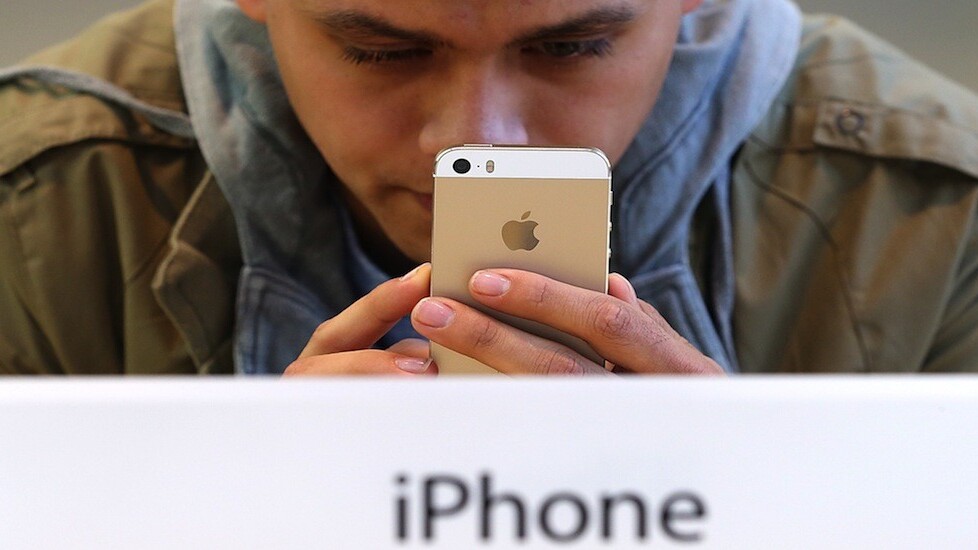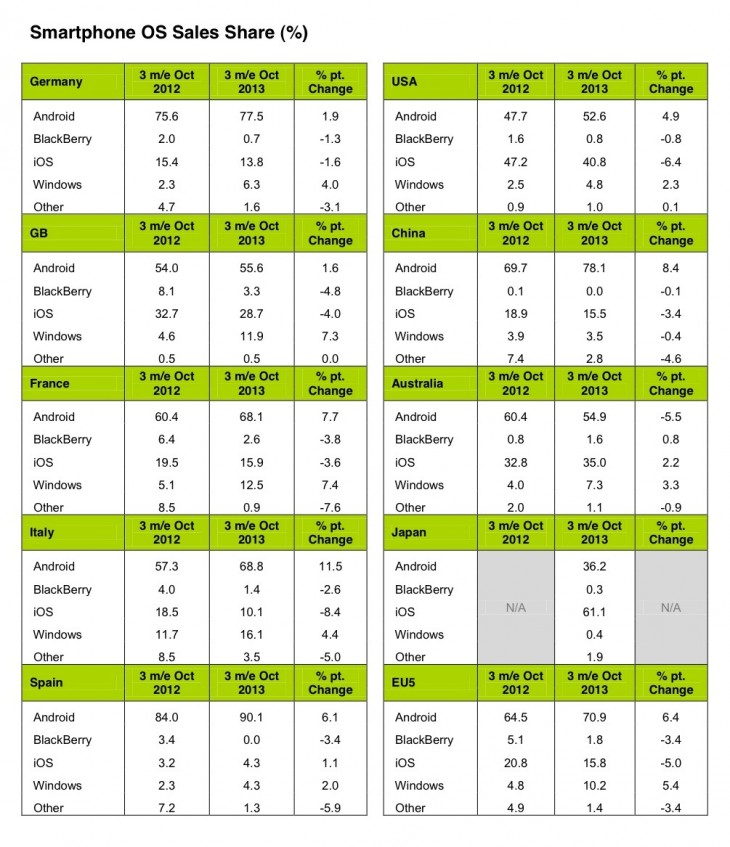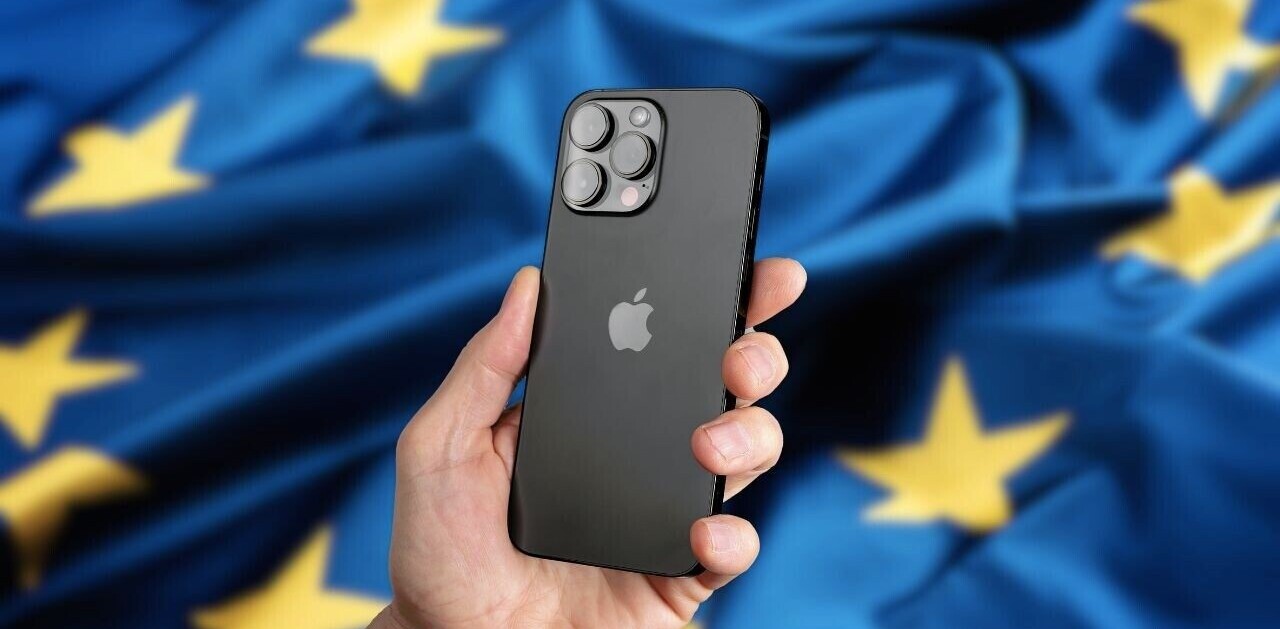
The release of Apple’s iPhone 5s and the lower-cost 5c in September may have helped to boost its market share, but generally Apple’s share of new handset sales for the three months to October 2013 still remains lower than when it released the iPhone 5, according to a new report from Kantar Worldpanel ComTech.
Dominic Sunnebo, strategic insight director at Kantar, says that this isn’t “wholly unexpected as shoppers tend to react more positively to ‘full’ releases than incremental improvements such as the 5s and 5c.”
Despite Apple’s bland overall showing, Kantar’s research shows that the two new iPhones have led to “spectacular” results in certain markets. For example, in Japan — where Apple finally reached a deal with the country’s largest carrier NTT Docomo to carry the iPhone — Apple’s share reached 76.1 percent in the month of October. The data refers to sales during October, rather than ‘installed base’ or number of handsets in use.
In the US, Apple hit a market share of 52.8 percent in October. Comparatively, iOS held a 35.9 percent share in the three months to September.
Despite a lot of backlash about the iPhone 5c not being as cheap as expected, Kantar notes that by creating a wider appeal with different price points, the company is already reaping the benefits as can be seen in “significant switching from competitors.” In the US, almost half of iPhone 5c owners switched from competitor brands, particularly Samsung and LG, compared with 80 percent of 5s owners who upgraded from a previous iPhone model.
In Europe, however, Kantar notes that iOS is experiencing challenges in notching up its market share, particularly in countries such as Italy and Germany where handset subsidies are lower.
In the UK though, iOS sales share is now at 28.7 percent, up slightly from 27 percent in the three months to September 2013, as sales are being driven by the iPhone 5s. Kantar notes that the 5s has outsold the 5c in the UK by three to one since the phone launches.
Where Apple faces challenges though, Windows is gaining traction. Across Europe, Android remains the number one OS with 70.9 percent share, and Apple accounts for 15.8 percent — but Windows Phone is climbing and now makes up 10.2 percent of smartphone sales across five major European markets – the UK, Germany, France, Italy and Spain.
Here’s a chart from Kantar showing the market share of major smartphone operating systems in various countries.
Headline image via Justin Sullivan/Getty Images
Get the TNW newsletter
Get the most important tech news in your inbox each week.




